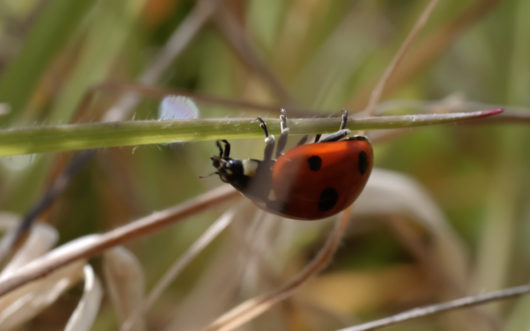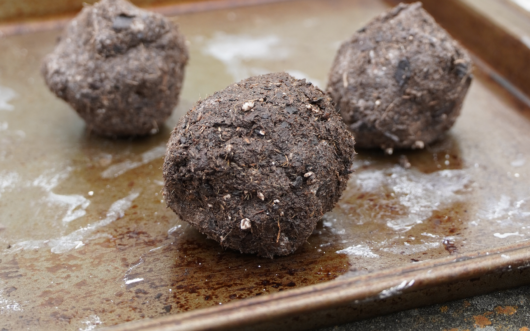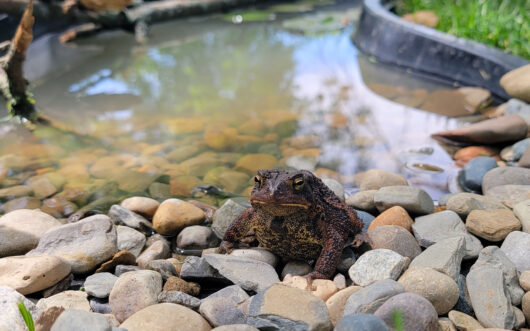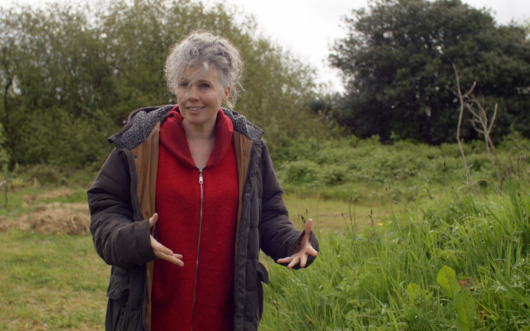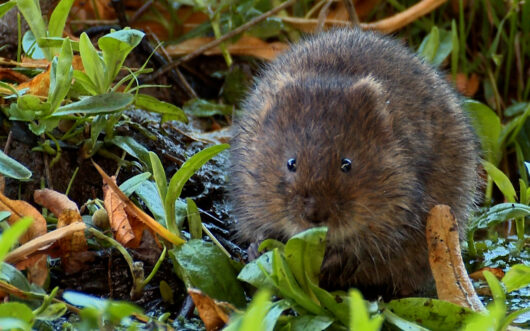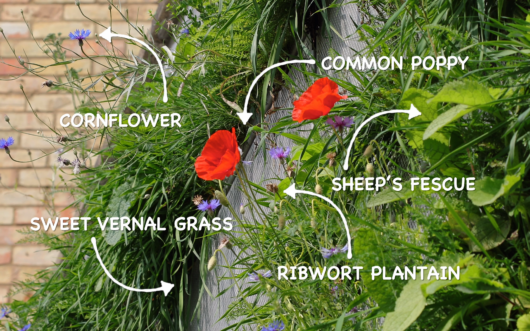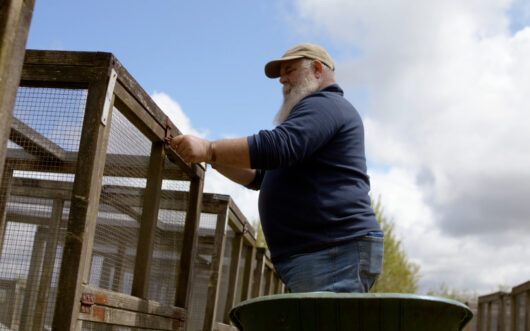Also available in Spanish
Share on Facebook
The effects of biodiversity loss can be seen all around us – but there are local, actionable, and easy solutions to help give native plants and animals a foothold to recover!
The simplest way to make a difference might be to create your own an ARK – an “Act of Restorative Kindness” as featured in our Wild Hope episode Gardener to Guardian. These native plant gardens come in any shape or size. Nature is quick to take over if given the chance, so often times your ARK can be created by… just letting nature do it’s thing!
If you’re looking for inspiration to get started, handy step-by-step facilitation guides, or ways to make more of an impact through citizen science, explore below and get ready to dive deeper into the world of native plant rewillding. Even the simplest contributions can make a difference in restoring local biodiversity!
Step by Step Guides Available in both English and Spanish
Get started on your new native plant garden with this seven-step guide developed by Wild Hope and our partners at StarNet. These guides detail how to let a plot of land “rewild” by being left alone to re-establish itself as an ecosystem supporting plant and animal life — a perfect starting point to inspire students, families, or communities to begin taking action.
• Download the guide in English at StarNet.
• Descarga la guía en Español a StarNet.
Illustration of a can
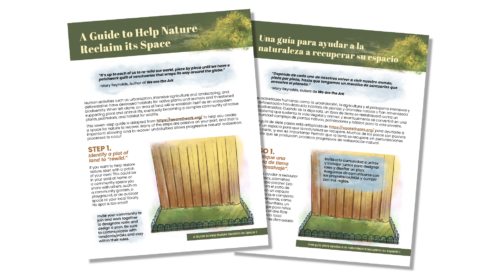
If you want to help restore nature, start with a patch of your own! Step 1 is to identify a plot of land to “rewild,” and no spot is too small. This could be in your yard at home or a community space you share with others, such as a community garden, a playground, or an outdoor space at your local library. Next, Step 2 is to display a sign — let others know that this chosen piece of land has a purpose! The sign can help address the common reactions that might arise as the land becomes “wilder” and can explain to interested neighbors what is happening here. Then it’s time for Step 3: Set the seeds free! Many native plant seeds lie dormant beneath the soil, and just need help reaching the surface! Lightly till the surface of the area and expose the soil beneath.

Next, for Step 4, break down barriers. Wildlife needs to travel to access food, water, and shelter. Remove fences or drill holes in the enclosures around your area to allow for the free movement of creatures across the land. Step 5 might feel difficult, but it’s necessary: Embrace the ‘messiness.’ There is life in the wildness! Early flowers are vital food sources for pollinators, and thorny native plants provide sanctuaries for small animals. Step 6 is the time to consider your lighting. Night pollinators cannot see in the blue and white toned lighting that is now standard outdoor lighting. Remove outdoor lights or replace them with lights that are red in tone which have less of an effect on nocturnal creatures.


Finally it’s time for the final step — Just sit back, enjoy… and spread the word! Let the land fill with butterflies, insects, wildflowers, birds, and animals as more life is restored each year. Collectively, this network of native green spaces is helping to rebuild biodiversity worldwide. Submit your location into the We Are the Ark database to show how your efforts are contributing to this global movement.
Library Facilitation Guide: Help Nature Reclaim its Space
Help your library, school, or nature center create a space for nature to recover! This facilitation guide gives you all the tools necessary to lead the charge. The activity can be done in any outdoor space, or indoors using planter containers.
• Download the guide and get your community engaged today!
Illustration of a can
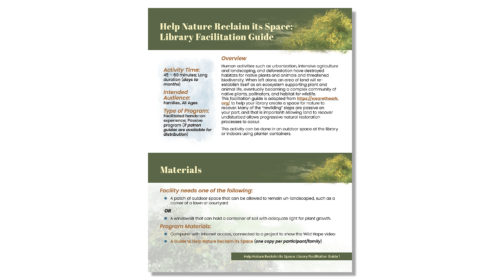
Kickoff Video: Become a Guardian of Nature
See how rewilding efforts are making a difference around the globe in this 6-minute kick-off video, available on YouTube in both English and Spanish – or downloadable at the links below. The video was designed to begin the discussion about local biodiversity and to empower young people to take action — perfect to share with your friends or community, or have a watch-party at the start of a rewilding activity to kick-start the project!
• Download the video in English (with closed captions here)
• Descargar el video en Español (con subtítulos aquí)
And to watch the full story behind the We Are the ARK project, check out the full episode of Wild Hope: Gardener to Guardian.
Illustration of a can
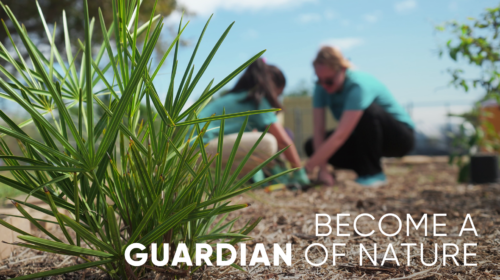
Put Up a Sign and Make Your ARK Official!
Recovering nature can look messy, so we always recommend building a sign to let your community know that nature is recovering naturally: This is an ARK!
After you create your ARK, make sure you tell us about what you did! Adding your ARK to the community database contributes to a global movement to understand how many rewilding efforts are taking place worldwide.
• Download the Activity Guide: Create a Sign for Your Rewilding Project
• Register your ARK at WeAretheARK.com
Illustration of a can
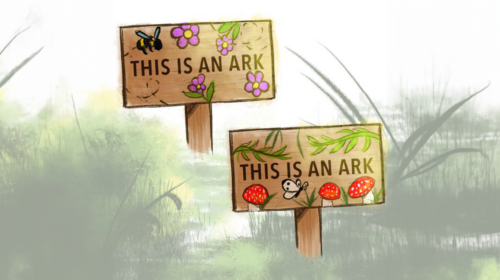
Contribute to Citizen Science and Run a BioBlitz with iNaturalist
Already have a wild space? Looking for ways to extend your community’s awareness and engagement with local biodiversity? Run a bioblitz! These group activities are an amazing way to further explore local wildlife, to track the progress of your ARK over time, and to contribute your observations to a global citizen science movement.
• Download the Activity Guide: Bioblitz at the Library
• Contribute your findings: Join us on iNaturalist
Illustration of a can
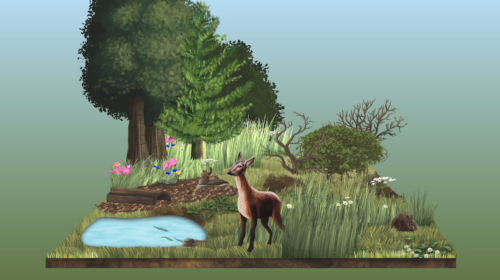
Whether you’ve just finished a rewilding project or you’re still curious about how to get started, we want to hear from you! Email us at info@wildhope.tv or tag Wild Hope on Instagram at @wildhopetv with questions, pictures of your progress, or ideas about how to collaborate.
Together, we can make a difference restoring biodiversity in every corner of the planet.

